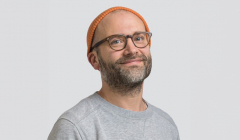
We can't be scared to take risks in 2025 – but it’s a team effort
Jeff Bowerman shares how he is embracing a ‘thrive in 2025’ mentality.

We’re obsessed with getting enough sleep. And in pursuit of the perfect eight hours we’ve given ourselves insomnia. But with the arrival of any epidemic comes new commercial opportunities for brands and entrepreneurs.

We’re obsessed with sleep. So obsessed that we’re turning it from a natural nightly occurrence into something that’s dissected, tracked and monitored. And in pursuit of the magic eight hours we’ve developed a new condition, Orthosomnia, an anxiety brought on by digital trackers. And guess what, it causes sleeplessness.
A recent paper for the British Medical Journal said that sleep had more impact on a young person’s wellbeing than bullying, physical activity and screen time. So, it’s not such a crazy idea that schoolchildren across Britain may be offered sleep lessons to help tackle the growing problem of insomnia.
The arrival of any epidemic will bring about commercial opportunities. At CES this year there were a multitude of new companies innovating in this space. From brainwave monitoring headbands to light therapy glasses, it seems the tech industry is determined to help us get our forty winks.
As is the world of fashion. For London Fashion Week in September 2018, Anya Hindmarch’s Chubby Cloud installation invited people to relax and recuperate on ‘the world’s largest beanbag.’ The three-day relaxation event also included guided meditation, bedtime story readings and a lecture on sleep patterns.
Sleep is part of a macro trend that sees more brands thinking about the health and wellness of their customers. From mental health awareness to nutritional advice, brands are taking a more holistic approach to the role they play in customers’ lives.
Forget the thumping music and disco lights, IKEA’s new fantasy night club only has one nocturnal activity in mind, and that’s sleep.
Created by Mother London and directed by Juan Cabral, the campaign ‘Tonight is to Sleep’ aims to reappraise bedtime. Following research that 63% of people feel unhappy with the amount of sleep they get, IKEA partnered with Dr. Guy Meadows, co-founder of The Sleep School to provide training for staff to educate customers.
The IKEA Sleep Hub will house information designed to help people get a better night’s sleep and direct them towards the brand’s bedtime products. This is further supported in-store by a series of workshops and events focusing on the insight that sleep is a truly individual experience.
The new ad follows a group of friends pulling up to a club in their pyjamas. Outside is a food truck serving bowls of Cheerios and toast kebabs. Inside, the dancefloor is filled with IKEA beds and people happily preparing for a night of sleep.
A bartender serves herbal teas and as the guests drift off to sleep, the nightclub fills with magical sheep that leap over the balcony to burst into showers of glitter confetti.
The campaign is the latest iteration of The Wonderful Everyday, making those everyday moments just a little bit more IKEA.



Qantas debuted a jet lag menu in spring 2018 onboard its 17-hour long-haul flight from Perth to London. The airline worked with the University of Sydney’s Charles Perkins Centre to create a menu that combines science and food to reduce the impact of jet lag. From tisane herbal tea to tuna poke salad, the Qantas 787 Dreamliner Perth to London menu aims to put the passengers’ circadian clocks on track.
Mattress startup Casper has opened a space where New Yorkers can relax and refresh, and even sleep for a short while in tubular wooden pods. Located in Manhattan's Soho neighbourhood, adjoining Casper's main retail shop that opened earlier this year, The Dreamery was designed by the brand's in-house team in collaboration with architecture firm Hollwich Kushner.

Looks like you need to create a Creativebrief account to perform this action.
Create account Sign inLooks like you need to create a Creativebrief account to perform this action.
Create account Sign in